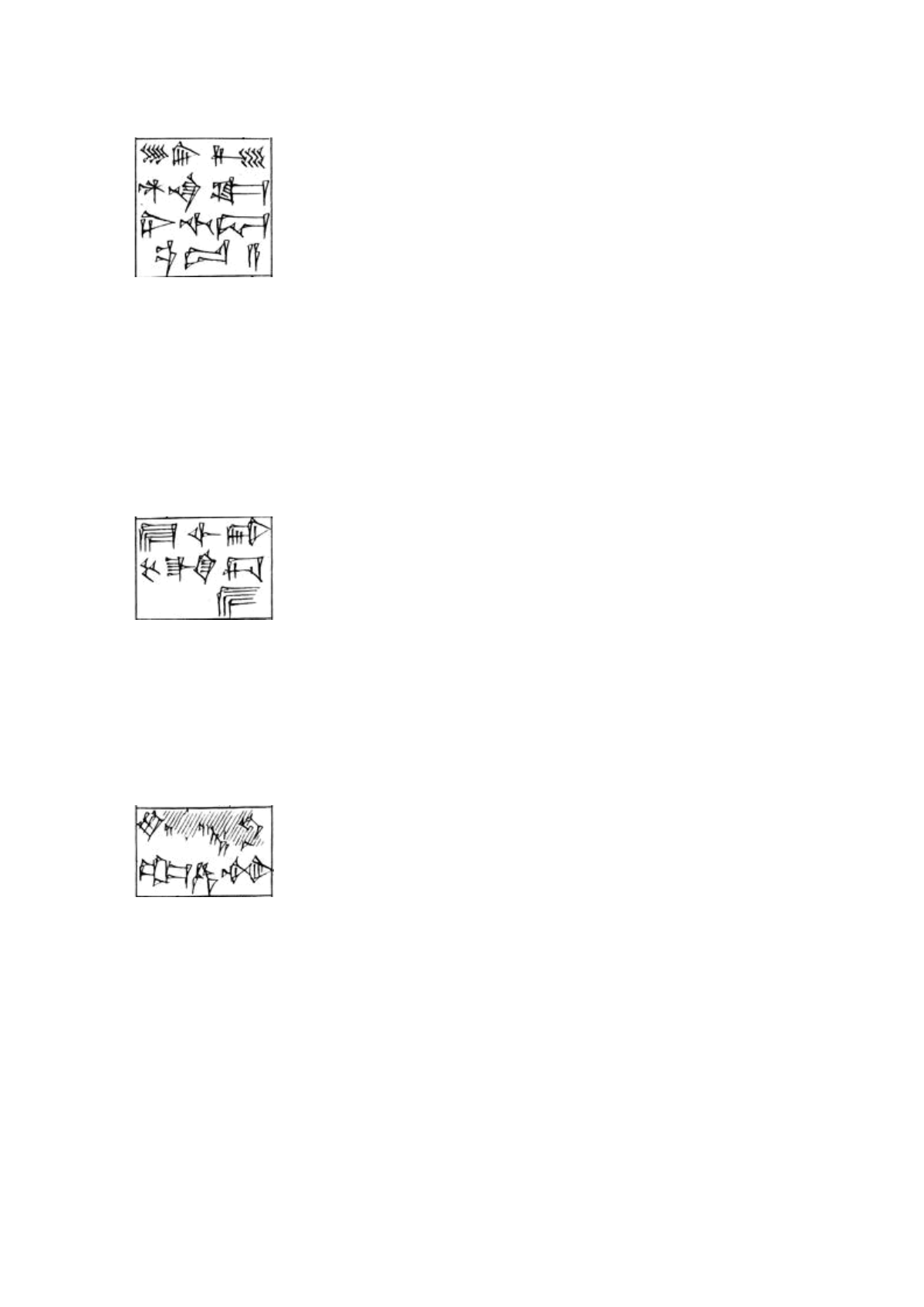

287
Gudea di Lagash – La costruzione del tempio di Ninjirsu - Cilindro A
A XXVII.10 – 742
še.er.zi an.na.kai
3
.ti.gin
7
ed
2
.a
[še.er.zian.]ak.a i
3
.ti.gin
7
ed
2
.a](.am
3
)
e con splendore celeste come la luce della luna esce.
[še.er.zian.]ak.a : con marker del genitivo e del locativo: “im Himmelsglanz” (GSG1.86; GSG2.113); cfr. A
XXVIII.1;
še.er.zi: “shine, light, glimmer (syllabic spelling of šer
2
, 'to shine brightly')” (SL); “éclat”
(PLS.135, s.v.
še.ir.zi); “radiance” (PSD2.236, s.v. šerzid); accadico
šaruru
.
i
3
.ti : “moonlight (cfr. iti, itud)” (SL) (cfr. A XI.26, XXI.12)
.gin
7
: marker dell’equitativo
ed
2
.a : participio intransitivo: “das aufgeht” (GSG1.143)
.am
3
: manca ?
A XXVII.11 – 743
e
2
igi.bikur.gal ki us
2
.sa
e
2
.ak
igi.bikur.gal ki.e us
2
.a
La facciata del tempio è una grande montagna che confina con la terra;
e
2
.ak : “nicht ganz sicher” (GSG1.97n3, 99n6)
igi : “face; aspect, looks; front” (SL)
ki.e us
2
.a : ossia “saldamente appoggiata in terra” (?). Per la costruzione, cfr. A XXV.13, XXVI.26. Per ki.e,
vedi GSG1.111 (cfr. GSG2.93n1). Per us
2
.a “angrenzend”, vedi GSG1.144
A XXVII.12 – 744
šag
4
.
[
bi nam.šub
]
šir
3
ha.mun
šag
4
.bi nam.šub šir
3
ha.mun
il suo interno (risuona di) incantesimi e canti armoniosi;
nam.šub
[NAM.RU] : “incantation, spell (abstract prefix + 'to cast')” (SL); “incantation; chant” (PLS.107);
“das, was man auf etwas wirft = Beschworung” (GSG1.62); accadico
šiptu
šir
3
[EZEN] : “song; lament” (SL); “chant, lamentation” (PLS.136)
ha.mun [HA.DIMxŠE] : “mutually opposing; contrasting, harmonizing; clashing (hum, 'to wrestle'
conjugated as Akk.
huud
, 'joy', conjugates into
hadûm
, 'joyful' - except in Sumerian there is no syllable
'mum', just the syllable ‘mun’)” (SL); “opposés; contrastés, contrastant” (PLS.69); “harmony”
(PSD2.107). Per il segno mun [DIMxŠE], vedi LEC.250, MEA.95
















